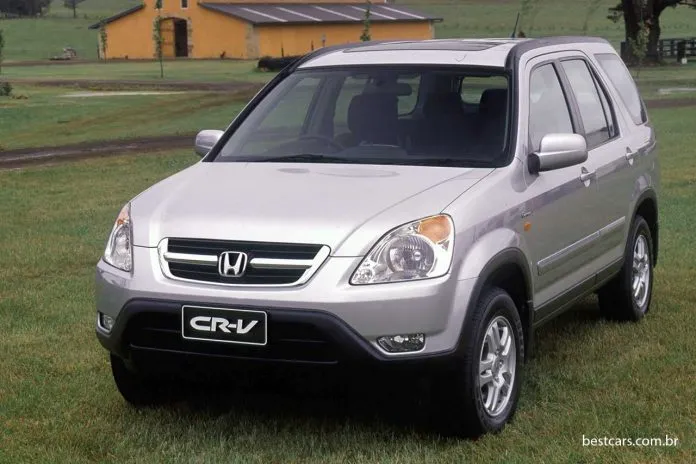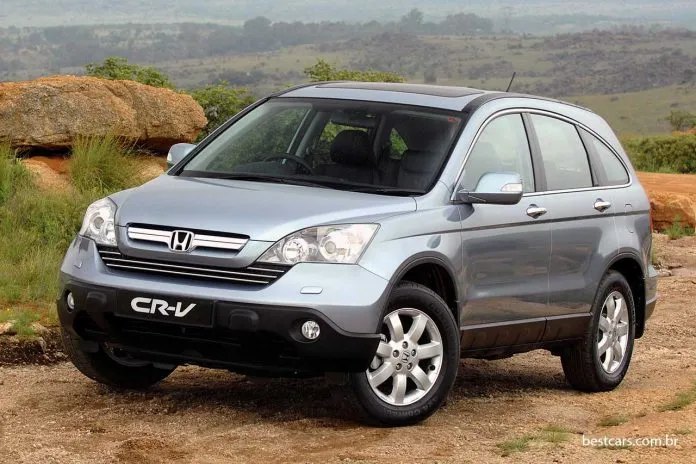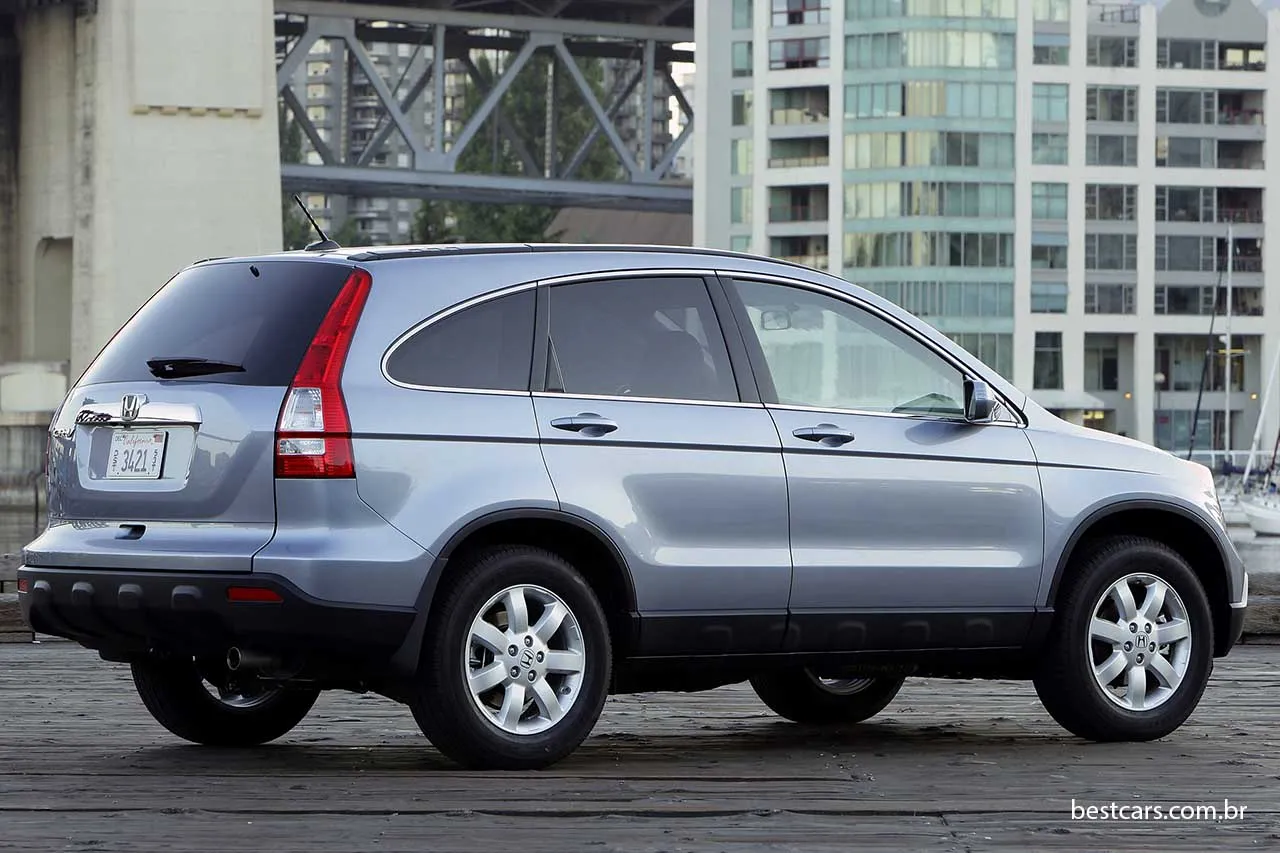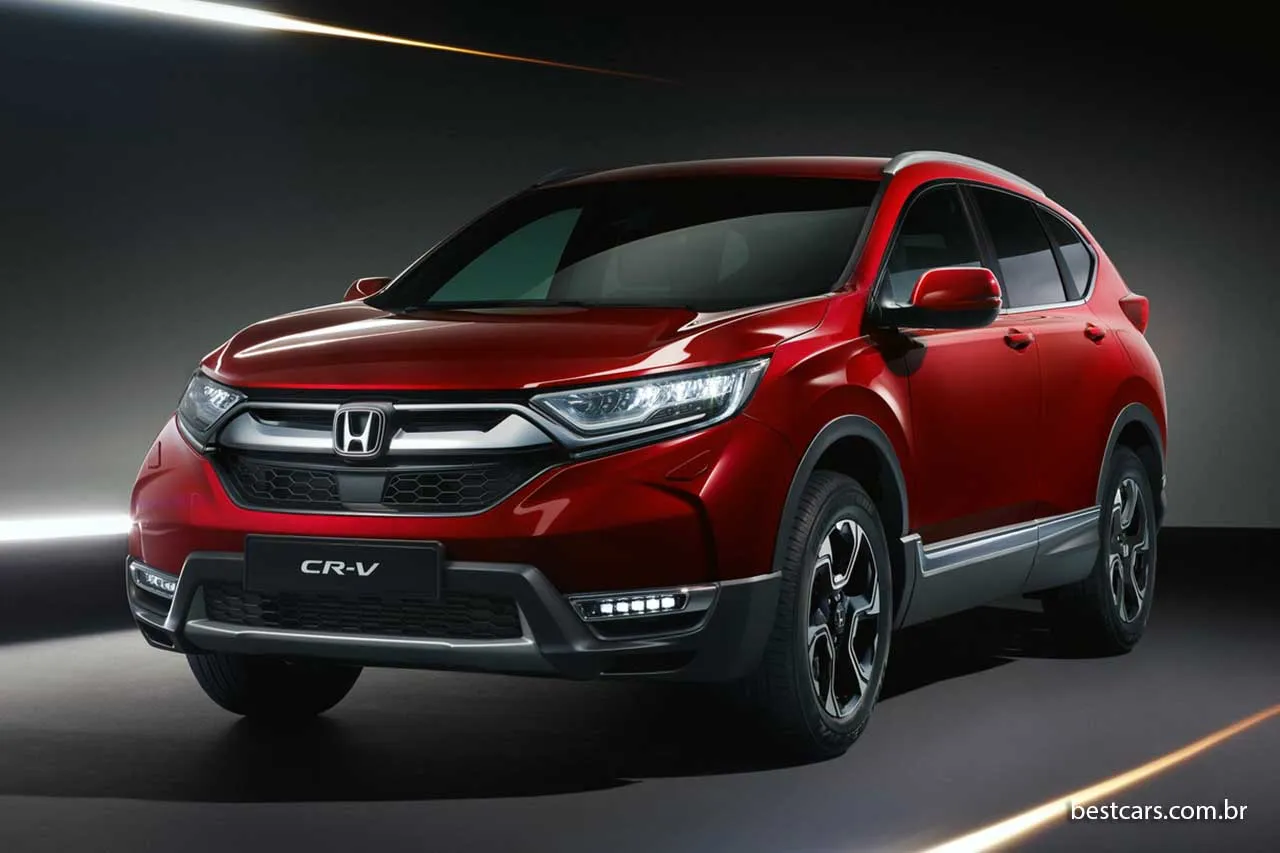If you are a lover of SUVs and values the practicality, comfort and a touch of sophistication, the Honda CR-V is a model that deserves all your attention. Since its launch in 1995, this vehicle redefined the concept of a sports utility vehicle, bringing a perfect balance between the performance of a passenger car and the robustness of an SUV.
Until the 1990s, SUVs were predominantly designed with a body-on-frame chassis, sharing platforms with pickup trucks. This was the standard for models such as the Suzuki Vitara and Kia Sportage, in addition to luxurious icons such as the Range Rover and Mercedes-Benz G-Class. However, the emergence of Japanese models, such as the Toyota RAV4 in 1994 and the Honda CR-V in 1995, drastically changed this formula. In this article, we will explore the evolution of CR-V, its influence on the market and how it has won over consumers over more than two decades.
The Rise of an Icon

The name CR-V is an acronym for “Comfortable Runabout Vehicle”. From the beginning, the model stood out for its design inspired by the Honda Civic, which gave it a style closer to a passenger car. Its simple shape, with emphasis on the rear lights on the pillars — a trend started by the Volvo 850 station wagon — showed its inclination towards an audience that sought comfort and practicality.
Among the details that won over many consumers were the side-opening rear lid with external spare tire, the tilting window and even a folding table built-in, ideal for picnics and short trips. With a monoblock structure and independent suspensions, the CR-V offered a smooth ride and above-average stability for the category.
With 4.51 meters long and an engine 2.0 liters the gasoline that delivered 126 hp of power and torque of 18.3 m.kgf, it offered two transmission options: a five-speed manual and a four-speed automatic. In addition, the system Real Time AWD guaranteed rear-wheel traction in situations of loss of grip, a feature that would soon become standard on modern SUVs.
In the United States, where it went on sale in 1997, the CR-V quickly led its category for four consecutive years.
Second Generation: 2001 – Evolution in Design and Mechanics
A second generation, launched in 2001, marked a major evolution in design, bringing the CR-V of a passenger car. Although it was only 2 cm longer, the model looked significantly larger thanks to the new design of the headlights and taillights. The tailgate now opened upwards, with the window being able to be raised separately.
In addition, it gained new engine options. In the United States, an engine 2.4 liters with 160 hp of power was introduced, while in Europe a version 2.2 turbodiesel with impressive 34.7 m.kgf of torque was made available. The front suspension was also replaced by the McPherson system, ensuring greater comfort and stability.
This generation reinforced the CR-V's reputation as one of the best-designed SUVs of its time. Positive reviews highlighted its mechanical reliability, comfort and until the off-road capability.
Third Generation: 2007 – Elegance and Modernity
In 2007, the CR-V arrived in its third generation with a more elegant design and smooth lines. The big news was the elimination of the spare tire on the rear lid, which is now stored in the luggage compartment. This change made the model more modern and in line with the new trend of urban SUVs.
Internally, the CR-V 2007 innovated by introducing a integrated browser with voice command, rear camera and even more optimized interior space. The engine has also evolved: in the USA, the engine 2.4 liters started offering 166 hp, while in Europe consumers had access to even more efficient diesel engines.
Compared to Volkswagen Tiguan in 2010, the CR-V stood out for its internal space, fuel consumption and its extensive equipment list, proving to be a balanced choice for consumers.
Fourth Generation: 2011 – More Technology and Security
A fourth generation, launched in 2011, brought a sportier design and significant improvements in safety and technology. Among the innovations, the introduction of the Honda Sensing, with features like automatic emergency braking, lane control and adaptive cruise control.
In Brazil, this generation also marked the adoption of flexible fuel engines, such as the 2.0 flex. This ensured greater competitiveness in the local market, especially after the model was manufactured in Mexico, which reduced import costs.
Fifth Generation: The Current Status of the CR-V
A fifth generation, launched in 2017, raised the bar for the CR-V even further. Now with 4.59 meters long and options like turbo engine 1.5 liters (190 hp) or a hybrid system, it has become one of the most technological SUVs in its category. With features such as blind spot alert, headlight assistant It is projection of information on the windshield, the CR-V demonstrates how Honda continues to innovate to meet the expectations of modern consumers.
Honda CR-V in Brazil: A Success Story

The Honda CR-V arrived in Brazil in 2000 and since then, it has remained one of the main references among mid-size SUVs. Honda's strategy of offering flexible versions and all-wheel drive contributed to the model's success in the national market. Today, the CR-V continues to be a symbol of quality, innovation It is durability.
With estimated prices around R$ 250 thousand for the latest versions, it may seem like a significant investment, but its combination of technology, comfort It is appreciation in the used market worth every penny.
Conclusion
The Honda CR-V is not just a SUV. It is a milestone in automotive history, responsible for redefining the standards of comfort, performance and technology. If you are looking for a vehicle that combines the best of a car with the versatility of a utility vehicle, the CR-V should be at the top of your list. Its trajectory proves that, regardless of the generation, it will always be synonymous with innovation It is trust.
















